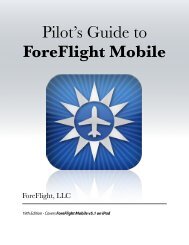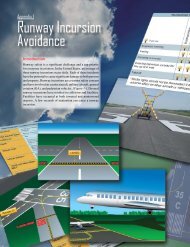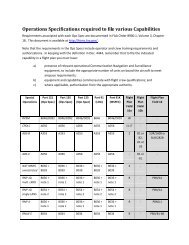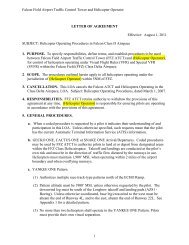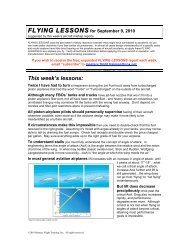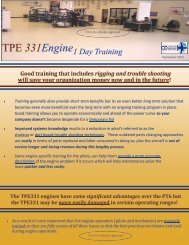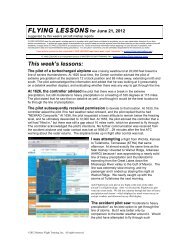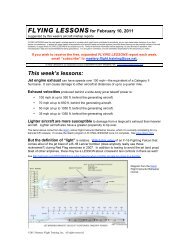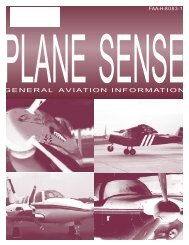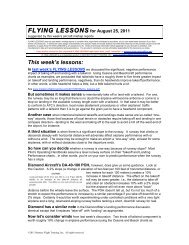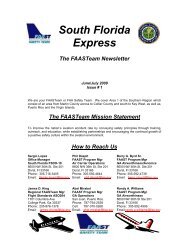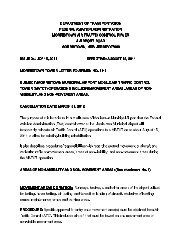WingX 2.0 User Manual - FAASafety.gov
WingX 2.0 User Manual - FAASafety.gov
WingX 2.0 User Manual - FAASafety.gov
You also want an ePaper? Increase the reach of your titles
YUMPU automatically turns print PDFs into web optimized ePapers that Google loves.
By entering any two of the three values, <strong>WingX</strong> will calculate the third.<br />
Example: The time to cover the 324 NM at 150 knots is “02:09:36”. This<br />
time was automatically propagated down and assumed to be the ‘fuel time’. By<br />
entering “12” in the “FPH” text box (i.e. 12 gallons as the Fuel Per Hour),<br />
<strong>WingX</strong> calculates the fuel required for that portion of the flight as 25.9 gallons.<br />
Note that pounds may also be used as the fuel units. We use gallons in this<br />
example.<br />
To determine endurance for a specified fuel load, enter the number of gallons<br />
(or pounds) and the Fuel Per Hour (FPH) value and <strong>WingX</strong> will calculate the endurance in HH:MM:SS.<br />
IFR Climb Rate and Climb Angle<br />
IFR climb rates and climb angles are critical for safe flight in non-visual conditions. IFR departure procedures<br />
are designed and published with specific criteria and these are printed right on the departure procedure.<br />
However, the requirements are provided in terms of climb rate per NM, but this is not easily measurable in the<br />
aircraft and neither is it easily determinable during pre-flight preparations. By entering the required climb<br />
gradient as published on the departure procedure, as well as the calculated ground speed, <strong>WingX</strong> will accurately<br />
calculate the required climb rate in feet per minute (FPM) and the climb angle in degrees. Using this valuable<br />
information, pilots can carefully monitor the climb performance during the climb to ensure that the minimum<br />
climb gradient is being achieved thereby significantly increasing the safety of the flight.<br />
Example: If the climb procedure specified 300 ft/nm as the required climb<br />
gradient and we were capable of a ground speed of 120 knots, then the<br />
required climb rate is calculated to be 600 ft/minute with a climb angle of<br />
2.83˚.<br />
Time Sub-page<br />
Times are everywhere in aviation from logbooks, to FARs. <strong>WingX</strong> makes adding, subtracting as well as Duty<br />
Flight Time calculations easy.<br />
Adding and Subtracting Times<br />
Times can be added or subtracted using either format HH:MM:SS or decimal hours.<br />
77




